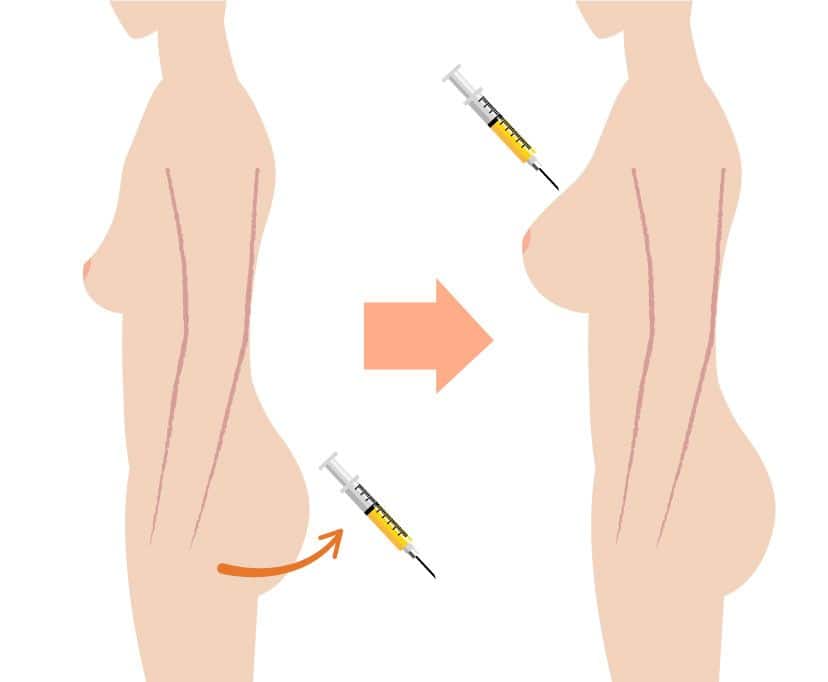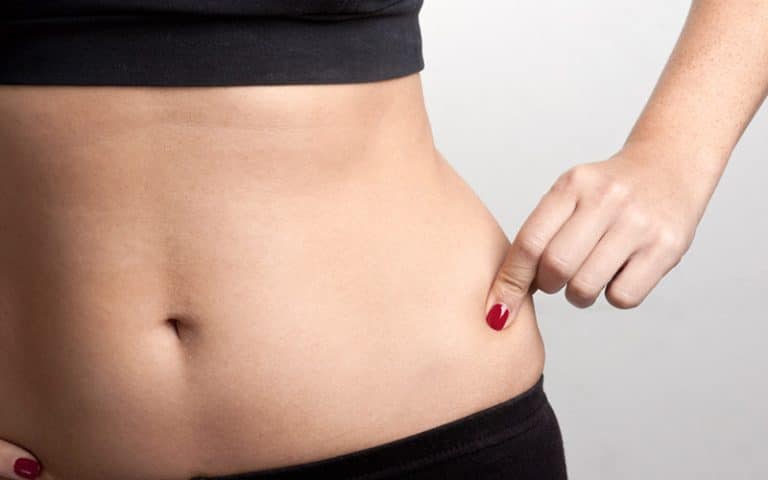Curious about the cost of fat transfer breast augmentation? This innovative procedure offers a natural alternative to implants. While traditional breast implants use silicone or saline, which are a foreign object, a plastic surgeon’s fat transfer way uses your own body fat. It’s a game-changer for those seeking a more organic look and feel from natural breast augmentation procedures. The price for natural breast augmentation can vary based on factors like the surgeon’s expertise, location, and the amount of fat transferred. Understanding these costs is crucial for making an informed decision about implant and breast fat grafting.
In this post, we’ll break down everything you need to know about fat transfer breast augmentation and implant costs. From initial consultations to post-op care, get ready to dive into the details that matter most.
Key Takeaways
- Understand the Costs: The average cost of fat transfer breast augmentation in the U.S. ranges from $3,000 to $11,000, depending on various factors like location and surgeon expertise.
- Ideal Candidates: This procedure is best suited for those who seek a modest increase in breast size and have enough excess fat in other body areas for transfer.
- Fat Removal Sites: Common areas for fat removal include the abdomen, thighs, and flanks, which can also help contour these regions.
- Insurance Coverage: Most insurance plans do not cover cosmetic procedures like fat transfer breast augmentation, so plan accordingly.
- Recovery Time: Expect a recovery period of about 1-2 weeks, with full results visible after a few months as swelling subsides and fat cells stabilize.
- Comparing Options: Fat transfer offers a more natural look and feel compared to implants but may not provide as dramatic a size increase.
Understanding Fat Transfer Breast Augmentation
Procedure Overview
Fat transfer breast augmentation is a cosmetic surgery. It involves liposuction to remove fat from one part of the body. The surgeon then injects this fat into the breasts to enhance their size and shape. This method uses the patient’s own fat cells.
Natural Look and Feel
One key benefit of fat transfer breast augmentation is the natural look and feel. Unlike traditional breast implants, the results are more subtle. The breasts become fuller but maintain a soft texture. This appeals to those seeking a natural breast augmentation.
Contouring Benefits
This procedure offers dual benefits. It contours areas where fat is removed, like the abdomen or thighs. Patients experience improved body proportions. The combination of body contouring and breast enhancement makes it a popular choice.
Cost Factors
The cost of fat transfer breast augmentation varies. Several factors influence the price:
- Surgeon’s expertise
- Geographic location
- Facility fees
- Anesthesia costs
- Number of areas treated with liposuction
Patients should expect to pay between $3,000 and $11,000.
Recovery Time
Recovery time for this procedure is shorter compared to traditional implants. Most patients return to normal activities within a week. Full recovery may take several weeks. Swelling and bruising are common but temporary.
Risks and Considerations
As with any surgery, there are risks. These include infection, fat absorption, and asymmetry. Choosing a qualified surgeon reduces these risks. Regular follow-up appointments ensure proper healing.
Ideal Candidates for the Procedure
Good Health
Candidates must be in good health. They should not have any serious medical conditions. This ensures a safer surgery and recovery process.
Realistic Expectations
Patients need to have realistic expectations. The cosmetic procedure offers moderate enhancement, not dramatic changes. Understanding this can lead to greater satisfaction with the results.
Sufficient Fat for Harvesting
Candidates must have enough fat for harvesting. This fat is taken from other parts of the body. Common areas include the abdomen, thighs, and flanks.

Stable Weight
Stability in weight is crucial. Fluctuations can affect the long-lasting results of the augmentation. Maintaining a stable weight helps preserve the new breast shape.
No Dramatic Size Increase
This procedure suits those not seeking a dramatic size increase. It provides a more natural look compared to saline or silicone implants. Patients looking for subtle enhancements are ideal candidates.
Non-Smokers
Non-smokers make better candidates. Smoking can complicate both surgery and recovery. It affects blood flow and healing processes.
Emotional Readiness
Emotional readiness is important too. Undergoing cosmetic procedures can be stressful. Being mentally prepared helps in coping with the changes.
Fat Removal Locations
Abdomen
The abdomen is a common site for fat removal. Many patients have excess fat in this area. Liposuction is used to extract the fat cells. This process helps contour the stomach, providing a flatter appearance.
Thighs
Thighs are another popular location for fat extraction. Patients often have pockets of fat here. Removing fat from the thighs can slim down the legs. This makes them look more toned and shapely.
Buttocks
Fat removal from the buttocks is also frequent. This area often has sufficient fat for transfer. Contouring the buttocks can enhance their shape. It provides a more balanced body profile.
Determining Factors
The choice of fat removal site depends on the patient’s body type. Doctors assess where excess fat is stored. They also consider how much fat is available for transfer to the breasts.
Patients with more abdominal fat may prefer that area. Those with more thigh or buttock fat might choose these locations instead.
Added Benefits
Selecting an area for fat removal offers aesthetic advantages. The chosen site gets contoured during liposuction. This dual benefit means patients receive a slimmer, more defined look in that region.
Average Cost in the U.S.
National Average
The national average cost for fat transfer breast augmentation is $9,932. This cost can vary widely. Prices range from $4,378 to $17,500. Many factors influence this variation.
Geographic Variation
Costs differ across states. In California, prices are higher. Procedures can cost up to $15,000. In Texas, the average is around $10,000. In Florida, it’s closer to $8,000. These differences depend on local demand and living costs.
Procedure Complexity
The complexity of the procedure impacts the total cost. A straightforward procedure costs less. If more fat removal locations are involved, it costs more. Surgeons need extra time and skill for complex cases.
Surgeon Expertise
A surgeon’s expertise also affects the cost. Highly experienced surgeons charge more. They offer better results and safety. Less experienced surgeons might charge less but could compromise quality.
Insurance Coverage Possibilities
Cosmetic Procedure
Most insurance plans do not cover fat transfer breast augmentation. This procedure is considered cosmetic. Insurance companies typically exclude elective surgeries from their coverage. Patients should be aware of this before planning the surgery.
Cosmetic procedures are seen as non-essential. They are not covered unless there is a medical necessity. It’s crucial to understand your plan’s specifics.
Medical Necessity
There are exceptions where insurance might cover the cost. If the fat transfer is part of breast reconstruction, it may be deemed medically necessary. This often applies to patients who have undergone mastectomies.
Breast reconstruction can include fat transfer. Insurance providers may cover it if it’s part of a treatment plan for cancer recovery. Patients should check with their doctors and insurance companies.
Consulting Your Provider
Patients need to consult with their insurance provider for specific coverage details. Each insurance company has different policies. Some may offer partial coverage under certain conditions.
Ask your provider directly about the procedure. Get written confirmation of what is and isn’t covered. Clear communication can prevent unexpected costs later.
Areas of Coverage
Insurance might cover related areas even if they don’t cover the main procedure. For example, pre-surgery consultations or post-surgery care could be included. Always inquire about every aspect of the surgery.
Check for hidden costs in your policy. Knowing these details can help you plan better financially.
Additional Tips
In addition to consulting with your provider, consider other financial options. Some clinics offer payment plans or financing options. This can make the procedure more affordable over time.
Look into all available resources before making a decision. This ensures you won’t face financial strain later.
Procedure and Recovery Insights
Fat Harvesting
The fat transfer breast augmentation begins with fat harvesting. Surgeons use liposuction to remove fat from areas like the abdomen or thighs. They insert a thin tube called a cannula into small incisions. This process usually takes one to two hours.
Fat Processing
After harvesting, the fat undergoes processing. The surgeon purifies the fat by removing blood, oil, and other fluids. This ensures only healthy fat cells are used for the transfer. The purification process can take about 30 minutes.
Fat Injection
Next, the purified fat is injected into the breasts. The surgeon uses a fine needle to place the fat cells meticulously. This step requires precision to ensure even distribution and natural-looking results. The injection process usually lasts one to two hours.
Anesthesia Use
Anesthesia is crucial in this procedure. Most patients receive general anesthesia, meaning they are asleep during the surgery. Some may opt for local anesthesia with sedation, depending on their health and preferences. Anesthesia ensures comfort and pain-free experience during the procedure.
Post-Operative Care
Post-operative care is essential for recovery. Patients should follow all guidelines provided by their surgeon. This includes wearing compression garments on areas where fat was harvested. These garments help reduce swelling and support healing.
Expected Downtime
Recovery time varies among individuals. Most women can return to light activities within a week. However, full recovery may take several weeks. It’s important to avoid strenuous activities during this period to prevent complications.
Follow-Up Consultations
Follow-up consultations are vital for monitoring progress. Surgeons will check for any signs of infection or complications. They will also assess how well the transferred fat is settling in the breasts. Regular follow-ups ensure optimal results and address any concerns promptly.
Health and Wellness Tips
Maintaining good health is crucial during recovery. Eating a balanced diet and staying hydrated supports healing. Avoid smoking and alcohol as they can impede recovery and affect results.
Importance of Guidelines
Following the surgeon’s guidelines is critical for success. These instructions help minimize risks and enhance outcomes. Ignoring these guidelines can lead to complications or unsatisfactory results.
Results Duration and Risks
Longevity of Results
Fat transfer breast augmentation can yield long-lasting results. However, some fat reabsorption is expected. Typically, around 30-50% of the transferred fat may be reabsorbed by the body within the first year. The remaining fat cells usually become permanent. Many patients experience satisfactory results for several years.
Potential Risks
There are several risks associated with this procedure. Infection is one common risk. Patients may also face asymmetry, where one breast looks different from the other. Dissatisfaction with the outcome can occur if expectations are not met.
Other complications include:
- Fat necrosis, where transferred fat cells die
- Formation of cysts or lumps
- Scarring at the injection sites
Discomfort and Recovery
Patients often experience discomfort after surgery. Swelling and bruising are common during the initial recovery phase. These symptoms typically subside within a few weeks.
Pain management is crucial during this period. Over-the-counter pain relievers can help. Following post-operative care instructions is essential to minimize discomfort.
Importance of Consultations
Consulting with a qualified surgeon is vital for understanding personalized risk profiles. Each patient’s body reacts differently to surgery. A detailed consultation helps in identifying specific risks and setting realistic expectations.
Comparing Fat Transfer and Implants
Appearance
Fat transfer surgeries offer a more natural appearance. The fat used is from the patient’s body. This makes the breasts look and feel more like natural tissue. Breast implants, on the other hand, can sometimes appear less natural. Silicone implants may feel firmer than natural breast tissue.
Feel
Fat transfer procedures provide a softer feel. Since the fat is from the patient’s own body, it integrates well into the existing tissue. Breast implants can sometimes feel different to the touch. Some people describe them as firmer or less flexible. This difference in texture can be noticeable.
Risk Profile
Fat grafting techniques have a different risk profile compared to implants. Fat transfer procedures avoid many risks associated with implants. There is no risk of implant rupture or leakage. There are also no concerns about capsular contracture, which is a common issue with implants.
Breast implants carry specific risks. These include rupture, leakage, and capsular contracture. Implant augmentation also requires regular monitoring for potential complications. Patients may need additional surgeries over time.
Natural Results
Fat transfer provides very natural results. The fat cells integrate into the breast tissue seamlessly. This leads to a more organic look and feel. There are no foreign objects involved, reducing the chance of complications.
Implants can sometimes lead to unnatural results. They might not move or feel like natural breast tissue. Over time, implants may shift or change shape.
Body Contouring Benefit
An added benefit of fat transfer surgeries is body contouring. During the fat transfer procedure, liposuction is used to harvest fat from other areas of the body. This can improve the overall body shape by removing unwanted fat from areas like the abdomen or thighs.
Implant augmentation does not offer this benefit. It solely focuses on enhancing breast size and shape without affecting other parts of the body.
Financing Options with CareCredit
CareCredit Overview
CareCredit is a financing option for those considering fat transfer breast augmentation. Many people need financial assistance to afford cosmetic procedures. CareCredit helps by offering a credit card specifically designed for healthcare expenses.
Special Financing Terms
CareCredit offers special financing terms. One popular option is deferred interest if paid in full within a promotional period. This means no interest is charged if the balance is paid off in time. The promotional periods vary, often ranging from 6 to 24 months.
Eligibility and Application Process
Applying for CareCredit is straightforward. Patients can apply online or over the phone. Approval decisions are usually quick, often within minutes. Eligibility depends on factors like credit history and income.
Affordability and Budgeting
Using CareCredit can make fat transfer breast augmentation more affordable. Patients can spread out payments over time instead of paying all at once. This makes it easier to fit the procedure into their budget.
Real-Life Examples
Many patients have successfully used CareCredit for their procedures. For instance, Sarah, a 35-year-old mother, used CareCredit to finance her fat transfer breast augmentation. She chose a 12-month deferred interest plan and managed to pay off the balance within that time frame.
Benefits of CareCredit
There are several benefits to using CareCredit:
- Flexible payment options: Choose from various repayment plans.
- Quick approval process: Get approved in minutes.
- Special financing terms: Deferred interest offers can save money.
- Widespread acceptance: Many clinics accept CareCredit.
Considerations Before Applying
Before applying, patients should consider their financial situation. It’s important to ensure they can meet the payment deadlines to avoid high-interest charges. Reading the terms and conditions carefully is crucial.
Comparing Costs
When comparing costs between fat transfer and implants, financing options like CareCredit can make a significant difference. Fat transfer might be more expensive upfront but could be more affordable with financing.
Final Remarks
Fat transfer breast augmentation offers a natural alternative to implants, enhancing your shape with your own fat. It’s crucial to weigh the costs, benefits, and potential risks. Understanding the procedure, recovery, and long-term results helps you make an informed decision.
If you’re considering this option, consult with a qualified surgeon. Financing options like CareCredit can ease the financial burden. Ready to take the next step? Book a consultation today and explore how fat transfer breast augmentation can work for you.
Frequently Asked Questions
What is fat transfer breast augmentation?
Fat transfer breast augmentation uses your own fat to enhance breast size. Surgeons remove fat from areas like the abdomen or thighs, then inject it into the breasts.
Who are ideal candidates for fat transfer breast augmentation?
Ideal candidates are healthy, non-smokers with enough body fat for transfer. They should have realistic expectations and desire a natural look.
Where is fat usually removed from for this procedure?
Fat is commonly removed from the abdomen, thighs, or flanks. The choice depends on where you have excess fat deposits.
What is the average cost of fat transfer breast augmentation in the U.S.?
The average cost ranges from $5,000 to $15,000. Prices vary based on location, surgeon experience, and specific patient needs.
Does insurance cover fat transfer breast augmentation?
Typically, insurance does not cover cosmetic procedures like fat transfer breast augmentation. Check with your provider for specifics.
How long do the results of fat transfer breast augmentation last?
Results can be long-lasting. However, some fat may be reabsorbed by the body over time. Maintaining a stable weight helps prolong results.
What are the main risks associated with this procedure?
Risks include infection, asymmetry, and potential fat reabsorption. Choosing an experienced surgeon reduces these risks significantly.




